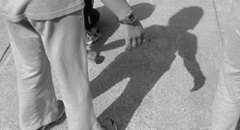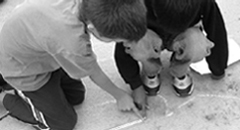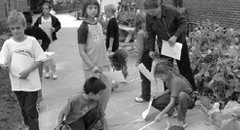
|

|

|
It can sometimes be hard to distinguish documentation from display. One thing you can do is to look back at the five features of documentation:
- Does the "display/documentation" involve a question about learning?
- Is it shared back with the learners?
- Does it involve more than one medium?
- Does it entail multiple perspectives, and include adult analysis or reflections?
- Does it help inform future learning experiences as well as revisit past learning?
The following quotes may also be informative. They are from a chapter by George Forman and Brenda Fyfe entitled "Negotiated Learning through Design, Documentation, and Discourse" in the Hundred Languages of Children: The Reggio Emilia Approach--Advanced Reflections (pp.245-246).
- "The passage from display to documentation travels the path from informing to educating and thereby changes the teacher's perspective from observing children to studying children..."
- "When applied to negotiated learning, displays should be converted to documentation by adding interpretation and explanation to the graphics. A set of photographs pasted to posterboard showing a trip to the farm is a display. A set of photographs captioned with the children's words would still be a display. The panel needs commentary to qualify as documentation..."
- "Documentation invites inquiry about the children's thinking and invites predictions about effective teaching...Display invites pleasure and satisfaction, but is not deliberately designed to provoke hypotheses. Documentation is a research report used to enhance discourse rather than a record of a past event."
- "Documentation, as we mean it here, is more focused on children than on a child. Even when a child is featured in documentation, the intent is to have the viewer treat this child as a representative child..."
- "Documentation tries to raise questions about children's thinking and teaching strategies rather than to mark the progress of all individual children..."
© 2006 Making Learning Visible Project at the Harvard Graduate School of Education
Related Example:
Once is not enough: What effects can making thinking visible have on student learning? provides a useful example of some of the qualities described above.
Also see:
Documentation Features in Practice
Other Aspects of Documentation
[Home] [Site Map]